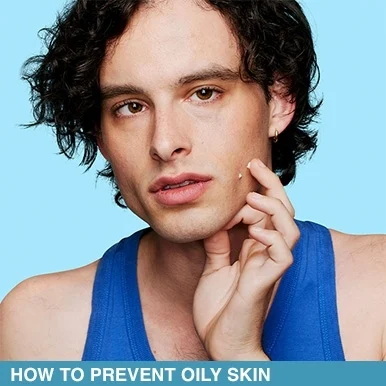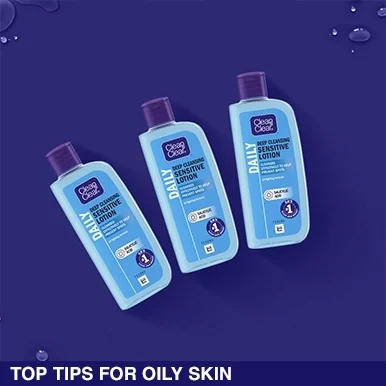
How to control oily skin
Do you suffer from oily skin? Read more to understand why we can sometimes be prone to oily skin and top tips to prevent excess oil, allowing you to shine for the right reasons!
Why do we get oily skin?
Beneath the skin all over your body, there are glands called sebaceous glands, which produce oil (known as sebum oil) that keeps your skin naturally moisturised and healthy.
Our hormones control the amount of sebum oil that these glands produce. At certain times in our lives, like when you go through puberty, our sebaceous glands can produce more oil than our skin really needs to stay healthy. When this over production of oil is released from the pores, it can lead to shiny skin and allows spot-causing bacteria to breed and spots to develop.
In addition to hormonal changes, some other things can affect how oily your skin is:
Genetics – Your genes can impact the type of skin you have. If your parents are prone to oily skin it’s likely that you will be too. Learn your skin type on our Skin Needs Quiz tool to help you make the right decision about which products are most suitable for your skin.
Stress – That’s right, another reason to hate exams! Periods of increased stress can stimulate increased oil production making skin shinier and more spot-prone than usual.
Weather – Seasonal changes can also impact how much oil your skin produces. When the weather is hot and humid, we sweat more. Sweat mixes with the oil in your pores making it runnier, which means it can spread across your skin more easily.
Washing too much – Using products too often can over dry the skin leading to dry patches in some places and spots and blemishes in others = double trouble for you! Washing your face twice a day should be enough to keep skin clean and healthy!
Some moisturisers & make-up – Products you put on your face after washing should be oil-free to avoid adding to the oil already on your skin. The areas of your skin which are most prone to oily skin are the face, chest and back because this is where you have the highest concentration of sebaceous (oil producing) glands. On your face, your T-zone (forehead, nose & chin) are the areas that are most affected.
Know your T-Zone
Your T-Zone is made up of your forehead, nose and chin. These are areas of the face that can get particularly oily because they have the highest concentration of oil producing (sebaceous) glands. When you wash your face, it is good to focus on these areas to help to prevent and reduce oil build up.


